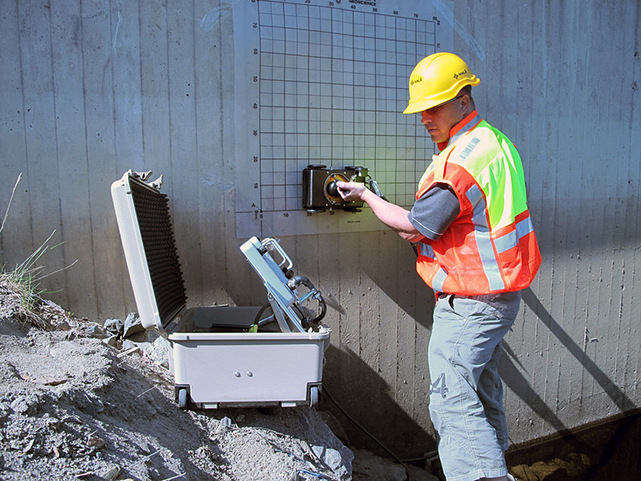RainierGPR Service Areas: Specialist Concrete Scanning in Your Region
RainierGPR Service Areas: Specialist Concrete Scanning in Your Region
Blog Article
Concrete Scanning: A Crucial Action Towards Ensuring Architectural Honesty and Safety
In the world of building and framework maintenance, the relevance of concrete scanning can not be overemphasized. By employing advanced innovation and methods, concrete scanning serves as an essential device in making certain that the honesty and security of bridges and buildings are supported to the highest criteria.
Significance of Concrete Scanning
Concrete scanning plays a crucial duty in ensuring the structural integrity and security of structures and facilities jobs. By using innovative innovations such as ground-penetrating radar (GPR) and electromagnetic induction, professionals can non-destructively examine concrete structures to detect possible problems, voids, ingrained things, and support layout. This procedure makes it possible for early detection of abnormalities that can endanger the stability of a structure, avoiding expensive problems and guaranteeing the security of residents.
Prior to drilling, reducing, or coring right into concrete, scanning helps determine the accurate locations of rebar, post-tension cable televisions, and other ingrained aspects, decreasing the risk of unintended hits that could lead to structural weaknesses. Furthermore, concrete scanning aids in top quality control by validating the density of concrete covers and identifying any kind of disparities that may influence the general longevity of the structure.
Modern Technology for Concrete Evaluation

Advantages of Very Early Detection
Timely detection of architectural issues can considerably mitigate threats and ensure the durability of building and construction projects. By recognizing prospective troubles early on in the building procedure, stakeholders can take positive steps to attend to problems prior to they rise right into bigger and extra expensive troubles. Among the key benefits of early discovery is the avoidance of architectural failures, which can position severe safety and security dangers and result in job hold-ups and economic losses.
In addition, early detection enables prompt repairs and upkeep, which can aid prolong the life-span of the structure. By attending to problems redirected here quickly, building and construction teams can stay clear of costly fixings or perhaps the demand for early substitute of architectural parts. This aggressive method not just saves time and money however also improves the overall safety and sturdiness of the building and construction job.
Additionally, early detection can improve job planning and decision-making by offering stakeholders with beneficial insights into the problem of the framework. Armed with this information, task managers can make educated selections regarding building materials, timelines, and techniques, resulting in much more effective and effective job outcomes.
Making Certain Structural Stability
Making sure the structural stability of you could try here a building and construction project is vital to its safety and longevity. Concrete scanning plays a crucial function in ensuring architectural security by finding potential issues such as gaps, delamination, or reinforcement rust that might endanger the integrity of the framework over time.
By utilizing innovative scanning technologies like ground-penetrating radar (GPR) and electro-magnetic induction, construction professionals can non-invasively inspect concrete structures to recognize areas of issue under the surface area. This proactive strategy permits the early detection of weak points or defects, enabling prompt repair work or support to avoid architectural failures.
Normal concrete scanning throughout different building stages and throughout the life process of a framework can assist preserve its security, reduce dangers, and make certain the safety and security of owners. By prioritizing architectural stability with concrete scanning, building and construction jobs can improve their resilience and sturdiness, eventually adding to greater security and longevity.

Stopping Crucial Failures
Implementing regular assessments, such as concrete scanning, can disclose covert flaws like gaps, fractures, or corrosion that might compromise the integrity of a structure. By making use of advanced scanning technologies like Ground Passing through Radar (GPR) or Concrete X-ray, designers can non-destructively evaluate the condition of concrete and identify weak factors that require support or repair.

Final Thought
Finally, concrete scanning plays a crucial role in making certain architectural integrity and security by using sophisticated technology for early discovery of potential problems. This aggressive technique assists prevent crucial failures and ensures the security of structures. It is essential to focus on concrete inspection as a conventional technique to secure the long life and safety of buildings and infrastructure.
Concrete scanning plays a critical role in making sure the structural integrity and security of structures and framework projects. Furthermore, concrete scanning aids in high quality control by confirming the thickness of concrete covers and finding any kind of inconsistencies that may check out this site impact the total toughness of the framework. Concrete scanning plays a vital duty in making sure structural security by identifying prospective concerns such as gaps, delamination, or reinforcement corrosion that can jeopardize the integrity of the structure over time.

In final thought, concrete scanning plays a vital role in ensuring architectural integrity and security by using sophisticated technology for early detection of prospective concerns.
Report this page